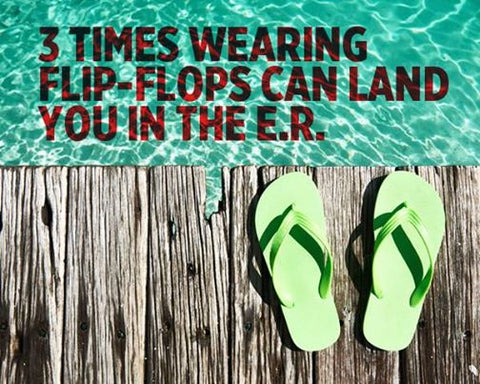IndyStyle
Check us out on IndyStyle!
The Perfect DIY Pedicure in 7 Easy Steps

Take sandal season into your own hands as Southern Hospitality gives 7 Steps for the Perfect DIY Pedicure! Courtesy of Well & Good.
How Switching Up Your Summer Shoes Helps Your Feet

The Cleveland Clinic explains how switching up your summer shoes helps your feet courtesy of msn.com!
Putting your best FEET forward,
SH
Arch Frenemies

Do your shoes leave your feet aching after a long day or a grueling workout? There’s a great chance that you could be in need of proper fitting arch supports, to relieve your pain. Whether they are over-the-counter or custom made arch supports (orthotics), we have 5 rules you should follow to help make shoes a FRIEND not a FOE to your daily activities!
Make Room!
Always check to see if the insoles inside your shoes can be removed, before inserting new arch supports. Inserting arch supports without removing the insoles can “crowd” your shoe, making for a tight and uncomfortable fit.
Left Foot, Right Foot
Is there still something about the fit of your supports that is not quite right? Then you want to make sure that you have the correct arch support in the correct shoe. The solution? Label you supports LEFT and RIGHT to ensure you’re placing your inserts into the correct shoes.
Easy Does It
It is always a great idea to not go full throttle when prancing around with your new arch supports (esp. custom orthotics). Instead, start by wearing the inserts 1-2 hours, then increase by 1-2 hours each day. This gives your feet an opportunity to adjust to your new inserts, preventing further discomfort.
One Size Fits All (of your shoes)
On the hunt for a new pair of kicks? Don’t forget your arch supports! Inserting them into any new shoes of interest provides you with the best idea of whether those new shoes are truly the right fit.
No Fit, No Good
If you follow the rules above and continue to experience discomfort with your newfound inserts, do not hesitate to contact your podiatrist. They can answer questions, provide general supervision, and even work to correct arch supports that are problematic.
Putting your best FEET forward,
SH
When Things Get Hard, Rub It Off

Are your feet summer ready? Check out our contribution to the Daily Aha from YouBeauty!
Putting your best FEET forward,
SH
Daily Aha!

Special thanks to YouBeauty for allowing us to contribute to their Daily Aha!
Putting your best FEET forward,
SH
Safety's Only Skin Deep

Looks like beauty isn’t the only thing that is skin deep. Check out these 3 common types of skin cancer that can turn YOUR summer into an absolute bummer.
Basal Cell Carcinoma
What is it: The most common form of skin cancer that spreads slowly. Appears as a smooth shiny nodule on the skin.
Who is most likely affected: Individuals with a fair skin complexion are most at risk.
Where does it strike: The face is most common, but can be found on any area of the body subject to long term sun damage
When does it occur: Adults over 40 are most commonly diagnosed.
Squamous Cell Carcinoma
What is it: Aggressive form of skin cancer that begins as a scaly red inflamed nodule that develops into an ulcer. Early diagnosis is key because it spreads very quickly.
Who is most likely affected: Fair skinned individuals beware! But anyone who has been subject to prolonged sun exposure should listen up. Smoking can also be a cause.
Where does it strike: The face and back of the hands are the problem areas for men, while the legs and feet are most common for women.
When does it occur: Adults 55 years or older.
Melanoma
What is it: The most deadly- but least common- form of skin cancer. Usually forms from a pre-existing mole or pigmented lesion that is asymmetrical and deformed. Spreads rapidly.
Who is most likely affected: People with light skin complexions are most at risk, especially those with freckles, red hair, or those who burn easily. However as much as 10% of those affected are of dark complexion.
Where does it strike: Areas most exposed to the sun (noticing a theme here?). The face is a common area for men and the legs for women. The soles of the hands and feet and the nails are most often affected by those with darker skin.
When does it occur: Usually found in those that are 50+, but can occur as early as 30 years of age.
As always, monitor the amount of time that you spend in the sun. If you are going to be exposed to the sun for extended periods of time always apply (and RE-apply) your sunscreen when needed. Inspect your skin regularly, and if you note any changes or formations of skin lesions report to your physician immediately. Early diagnosis is key!
Putting your best FEET forward,
SH
Flip Flopped

See why all sandals are NOT created equal, courtesy of Women's Health Magazine.
http://www.womenshealthmag.com/style/wearing-flip-flops?cid=socST_20140716_27948266
Wanna know what to look for when finding the right sandals? Check out these tips!
Putting your best FEET forward,
SH





